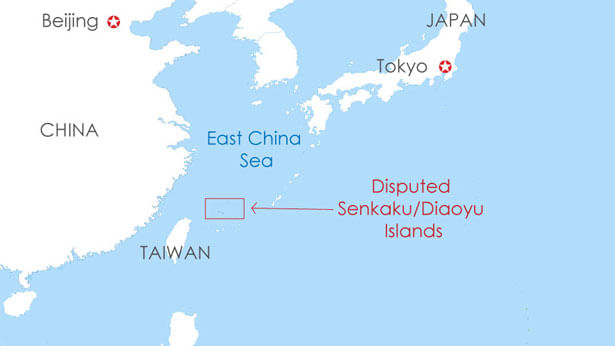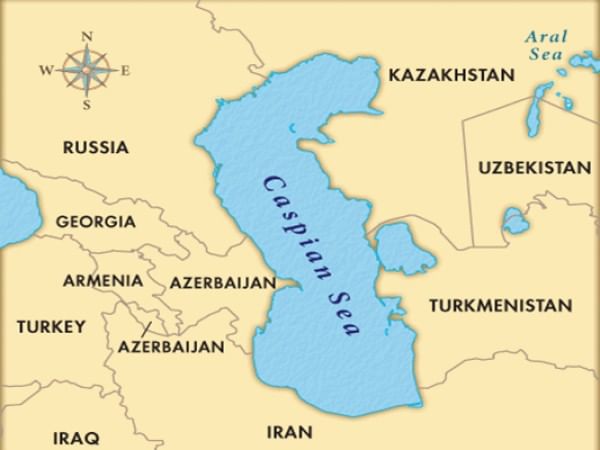Important Seas | Famous Books for UPSC Exam (Summary & Tests) PDF Download
Important Seas Of The World
Seas are smaller than oceans in terms of geography and are usually located where the land and ocean meet. Typically, Seas are partially enclosed by land. Seas have great geographical, Political, and Economic significance.
In oceanography, a marginal sea is a sea partially enclosed by islands, archipelagos, or peninsulas.
Some of the major marginal seas include the Arabian Sea, Baltic Sea, Bay of Bengal, Bering Sea, Black Sea, Gulf of California, Gulf of Mexico, Mediterranean Sea, Red Sea, and all four of the Siberian Seas (Barents, Kara, Laptev, and East Siberian).
The primary differences between marginal seas and open oceans are associated with depth and proximity to landmasses. Marginal seas, which are generally shallower than open oceans, are more influenced by human activities, river runoff, climate, and water circulation.
Major (Important) Seas of the world
- Arabian Sea
- South China Sea
- East China Sea
- Coral Sea
- Caribbean Sea
- Mediterranean Sea
- Ionian Sea
- Bay of Bengal
- Arabian Sea
- Bering Sea
- Sea of Okhotsk
- Gulf of Mexico
- Tasman Sea
- Hudson Bay
- Sea of Japan
- Sea of Azov
- Caspian Sea
- Adriatic Sea
- Baltic Sea
- Red Sea
- Yellow Sea
- Dead Sea
- Black Sea
- Tyrrhenian Sea
- Ligurian Sea
- Balearic Sea
- Alboran Sea
- Sargasso Sea
- The Aegean Sea…
Arabian Sea
The Arabian Sea is a region of the northern Indian Ocean bounded on the north by Pakistan, Iran, and the Gulf of Oman, on the west by the Gulf of Aden, Guardafui Channel, and the Arabian Peninsula, on the southeast by the Laccadive Sea, on the southwest by the Somali Sea, and the east by India.
The Gulf of Aden in the west connects the Arabian Sea to the Red Sea through Bab-el-Mandeb's strait, and the Gulf of Oman is in the northwest, connecting it to the Persian Gulf.

South China Sea
Places here are China, Vietnam, Hainan, Malaysia, and the Philippines. China is involved in disputes with many countries here. Places in dispute are Paracel, Scarborough Shoal, and The Spratly Islands.

East China Sea
The East China Sea is a marginal sea of the Western Pacific Ocean, located directly offshore from East China.
Towards the east of this sea are the Japanese islands of Kyushu and the Ryukyu Islands, towards the south of it is the South China Sea and to the west by the Asian continent. The sea connects with the Sea of Japan through the Korea Strait and opens to the north into the Yellow Sea. The countries which border the sea include South Korea, Japan, the Republic of China (Taiwan) and the People’s Republic of China.
In recent times, tensions between China and Japan have risen over the contested Senkaku/Diaoyu islands that lie in this sea. Both nations have raised as incursions into the disputed waters. Both countries have increased their military capabilities, particularly their radar and missile systems, in the region.

Adriatic Sea
The Adriatic Sea is a part of the Mediterranean Sea positioned between Italy's eastern coastline and countries of the Balkan Peninsula, from Slovenia, South through Croatia, Montenegro, and to Albania.
- The Adriatic Sea is a body of water separating the Italian Peninsula from the Balkan Peninsula.
- The countries with coasts on the Adriatic are Albania, Bosnia and Herzegovina, Croatia, Italy, Montenegro, and Slovenia.

Black Sea
The Black Sea is an inland sea located between far-southeastern Europe and the far-western edges of the continent of Asia and Turkey. Turkey borders it, and by Bulgaria, Romania, Ukraine, Russia, and Georgia.

The Caspian Sea
The Caspian Sea is an enclosed body of water between Asia and Europe. It is bordered by Iran, Turkmenistan, Kazakhstan, Azerbaijan, Russia.

Mediterranean Sea
The Mediterranean Sea is a sea connected to the Atlantic Ocean, surrounded by the Mediterranean Basin and almost completely enclosed by land: on the north by Southern Europe and Anatolia, south by North Africa, and on the east by the Levant.
Sargasso Sea
- While all other seas in the world are defined at least partly by land boundaries, the Sargasso Sea is defined only by ocean currents.
- It is bounded on the west by the Gulf Stream, north, by the North Atlantic Current, east, by the Canary Current, and south, by the North Atlantic Equatorial Current.
- This system of ocean currents forms the North Atlantic Gyre.
- It is the only sea on Earth which has no coastline.
Red Sea
The Red Sea (Erythraean Sea) is a seawater inlet of the Indian Ocean, lying between Africa and Asia.
The connection to the ocean is in the south through the Bab el Mandeb strait and the Gulf of Aden.
To the north lie the Sinai Peninsula, the Gulf of Aqaba, and the Gulf of Suez (leading to the Suez Canal).
The sea is underlain by the Red Sea Rift which is part of the Great Rift Valley.
The six countries bordering the Red Sea are:
- Saudi Arabia
- Yemen
- Egypt
- Sudan
- Eritrea
- Djibouti

The Ionian Sea
- The Ionian Sea is an elongated bay of the Mediterranean Sea, south of the Adriatic Sea.
- It is bounded by Southern Italy to the west, southern Albania to the north, and Greece's west coast.
Marginal Seas of the Arctic Ocean
- Barents Sea
- The Irish Sea
Marginal Seas of the Atlantic Ocean
- Argentine Sea
- Caribbean Sea
- English Channel
- Gulf of Mexico
- Hudson Bay
- Irish Sea
- Labrador Sea
- Mediterranean Sea
- North Sea
- Norwegian Sea
- Scotia Sea
Marginal Seas of the Indian Ocean
- Andaman Sea
- Arabian Sea
- Bay of Bengal
- Java Sea
- Persian Gulf
- Red Sea
- Sea of Zanj
Marginal Seas of the Mediterranean Sea
- Adriatic Sea
- Aegean Sea
Marginal Seas of the Pacific Ocean
- Bering Sea
- Celebes Sea
- Coral Sea
- East China Sea
- Philippine Sea
- Sea of Japan
- Sea of Okhotsk
- South China Sea (another important conflict zone)
- Tasman Sea (between Australia and New Zealand)
- Yellow Sea (by the Korean Peninsula)
Other Seas
- The Caribbean Sea is sometimes defined as a marginal sea, sometimes as a Mediterranean sea.
- The Caspian Sea is also sometimes defined as a marginal sea, and also the Dead Sea.
|
745 videos|1444 docs|633 tests
|
FAQs on Important Seas - Famous Books for UPSC Exam (Summary & Tests)
| 1. What are the five most important seas in the world? |  |
| 2. How does the Mediterranean Sea contribute to global trade? |  |
| 3. What makes the Red Sea significant in terms of marine biodiversity? |  |
| 4. How does the Arabian Sea impact the weather patterns of surrounding regions? |  |
| 5. What are the major shipping routes passing through the South China Sea? |  |

















